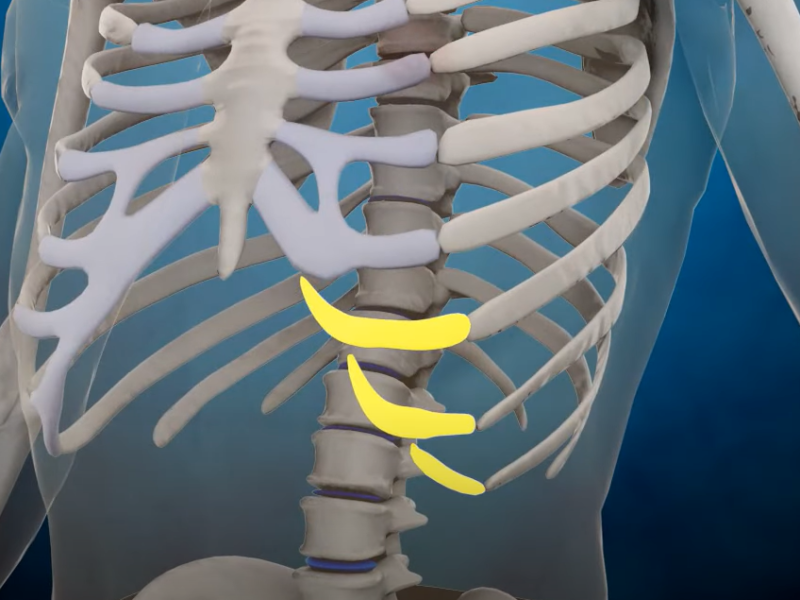Chest Wall Center
At the Chest Wall Center, you can take comfort in the care your child will receive. Your child and family will have access to a multidisciplinary team that includes world-class pediatric surgeons who specialize in treating chest wall abnormalities.
This team includes physicians, surgeons, pain management experts, physical therapists and a nurse care coordinator. Together, we’ll find the approach that is best for your child and gets them back to what matters most.
Pectus Clinic
Our Pectus Clinic is led by pediatric surgeons with unparalleled experience in pectus surgery. The clinic, held once a week, meets with patients and families to review their unique symptoms. Our clinic specializes in pectus carinatum, pectus excavatum, pectus arcuatum and slipping rib syndrome, among other chest wall deformities.
We’ll start by getting to know your child and their medical history, including how long you’ve noticed any chest wall deformity and any symptoms it may cause. We’ll also perform a physical exam to understand your child’s overall wellness.
If your child experiences symptoms that interfere with daily life, we will order additional testing to get a clear picture of your child’s health and chest wall structure. These tests may include:
A magnetic resonance imaging (MRI) test will capture clear 3D pictures of your child’s chest. These images allow us to better understand the severity of your child’s pectus. We do not routinely order computed tomography (CT) scans, as this test exposes children to radiation. MRIs do not expose your child to radiation.
The majority of bars used in the Nuss procedure are made from surgical stainless steel. If your child has a metal allergy, a titanium bar is available.
An echocardiogram helps us evaluate if (and how severely) your child’s condition is impacting their heart function.
Our Center is one of the few in the country that uses a metabolic stress test to better understand if your child’s pectus is affecting how their body is able to use oxygen.
Once your child’s tests are complete, our team will have an honest and open conversation about the next best steps. Every conversation and decision are centered around your child – their condition, symptoms, needs and goals. If your child is a candidate for surgery, we’ll discuss our innovative approach to treating pectus excavatum.
Innovating and Improving the Nuss Procedure for Better Outcomes
The Nuss procedure was invented by Dr. Donald Nuss in 1998 and was instantly elevated as an exciting, innovative approach to treating pectus excavatum.
Over the years, the team at Phoenix Children’s has refined and re-engineered the Nuss procedure to deliver better outcomes with substantially lower risk to children. Traditionally, the Nuss procedure involves carefully sliding a metal bar between the heart and sternum.
Our team lifts the sternum off of the heart and lungs before inserting the bar, which significantly lowers the risk of injury to the heart or lungs. Additionally, our surgeons share their insights and teach other pediatric surgeons about our novel methods.
Our approach is gaining traction around the world. Countries as far away as Australia are incorporating this surgical approach because of our team’s dedication to sharing our insights and teaching other pediatric surgeons.
Keeping Children Comfortable, Every Step of the Way
Surgery brings healing, but the recovery after surgery can be painful. Our specialized pain management team is composed of board-certified pediatric anesthesiologists with expertise in controlling and easing postoperative pain for your child while they are in the hospital and on their road to recovery at home.
Minimizing postoperative pain has always been an emphasis for our team. Our surgeons are pioneers in using technologies to decrease pain. At Phoenix Children’s, cryoablation is a standard of care with any Nuss procedure. Cryoablation freezes the intercostal nerves (nerves that run underneath the ribs). These nerves are the main source of pain after surgery.
This treatment helps by temporarily preventing these nerves from “firing,” which then prevents the body from feeling a significant portion of pain after surgery. Our studies have shown decreased postoperative pain, faster recoveries, less narcotic use and shorter hospital stays when using cryoablation.

Slipping Rib Syndrome
Our team is also on the forefront of caring for children with slipping rib syndrome. Dr. Lisa McMahon is a leader in the field and has published several research papers that have led to innovations and advancements in the diagnosis and surgical treatment of slipping ribs.
